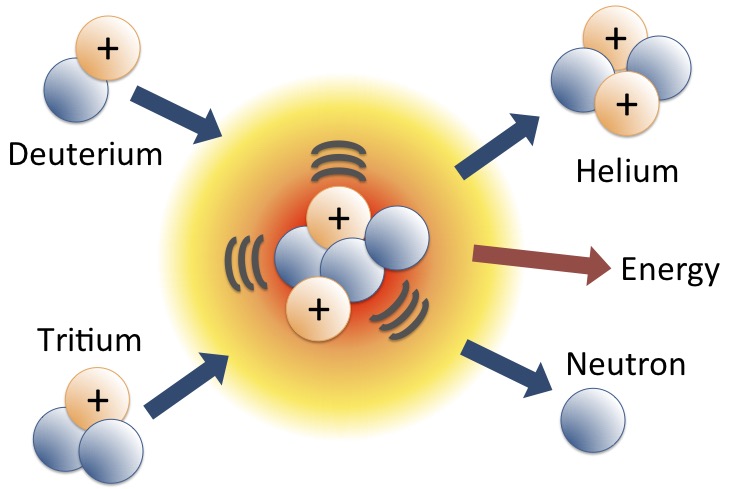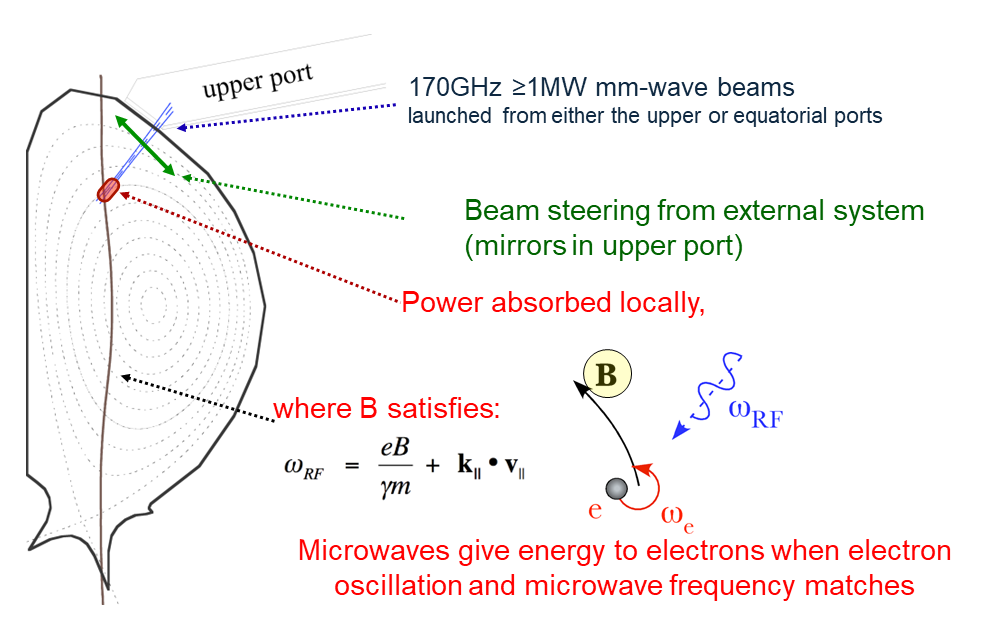What is Nuclear Fusion?
Nuclear Fusion can be used to produce abundant energy without increasing carbon emissions. This process happens on the sun where different isotopes of hydrogen fuse together to release massive amounts of energy. To achieve fusion, the strong repulsive forces between the nuclei have to be overcome by strong forces. The gravitational force on the sun provides this force along with the necessary temperature (which is also a result of the fusion reaction) to enable fusion.

D-T fusion reaction: A deuterium nucleus (one proton and one neutron) and a tritium nucleus (one proton and two neutrons), two isotopes of hydrogen, are fused to form a helium nucleus (two protons and two neutrons) and a free energetic neutron. Source: https://www6.lehigh.edu/~eus204/lab/PCL_fusion.php
How can we achieve controlled Nuclear Fusion in a reactor?
There are several approaches to achieving fusion in a reactor namely, magnetic confinement and inertial confinement and some combination thereof. In magnetic confinement approach strong magnetic fields (1-12 T) are used to confine the orbits of the plasma (nuclear fuel) in either a toroidal system (tokamak) or a complicated shape (stellarator). In a way, the magnetic field replaces the gravitational confinement offered by the sun. To kick start the fusion reaction, the fuel is heated by many methods such as bombarding with neutral particles (neutral beam heating), low frequency microwave (1-10 GHz) and electron cyclotron (EC) heating (10-400 GHz, depending on the magnetic field of the machine). EC heating is analogous to heating food in a microwave oven though heating the plasma fuel requires specific frequencies to achieve resonance with the operating magnetic field of the machine.
What is Electron Cyclotron (EC) Heating and Current Drive (EECD)?
The plasma can be resonantly heated using electromagnetic waves depending on the operating magnetic field of the machine. For current fusion machines under design and development these frequencies can range from 100-350 GHz. Electron Cyclotron Resonance Heating (ECRH, EC) can be efficiently focused on a narrow region of the plasma inside the reactor to heat a localized area. The EC waves can also be used to drive current in a specific region to quell instabilities like the Neo Classical Tearing (NTM) modes which can lead to plasma disruption in tokamaks. Compared to other heating processes such as lower hybrid (1-10 GHz), Ion Cyclotron Resonance Heating (ICRH) (tens to hundreds of MHz), EC heating requires a very small port, can be effectively pointed at a specific region of the plasma and does not create impurities in the vessel. The small port size of the EC heating system implies that the tritium breeding blanket can have a larger area and thus increase the critical Tritium Breeding Ratio (TBR) to > 1.

Electron Cyclotron Resonance Heating and Current Drive Courtesy: Mark Henderson, UKAEA, Plenary at IVEC 2024
Why are gyrotrons important for EC?
Gyrotrons with megawatt level powerper device are one of the the most effective way of heating plasmas in magnetically confined fusion machines like tokamaks and stellarators. Most of the Fusion Pilot Plants (FPPs) based on tokamaks and stellarators are expected to require between 10-40 MW of EC power over a range of frequencies from 100-350 GHz. So reliablity, robustness, wall plug efficiency and lifetime of gyrotrons are key considerations in the design of an FPP.
How are gyrotrons used in plasma diagnostics?
Gyrotrons can be an excellent source for plasma diagnostics. When a beam of gyrotron radiation is injected into the plasma it gets scattered by the energetic ions and electrons in the plasma. By carefully measuring the scattered power at different angles or the amplitude of the scattered power, the temperature of the ions can be estimated. This is based on the Collective Thomson Scattering (CTS) effect. Using another method called high-k scattering (Liu et al.) one can measure electron scale turbulence in a localized area of the plasma. This helps in characterizing the Ion Temperature Gradient (ITG) and Electron Temperature Gradient (ETG) instabilities in the system.